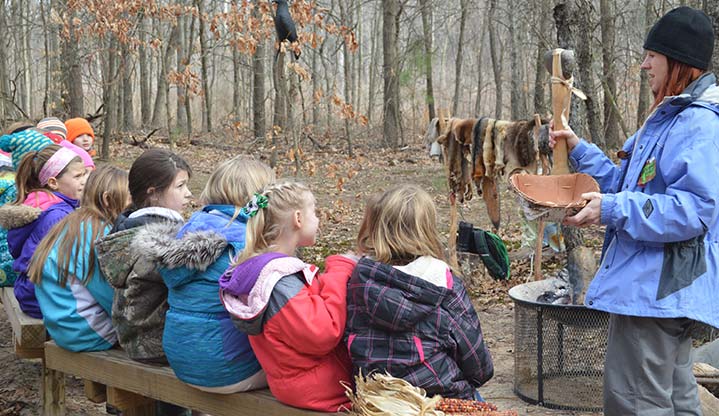Nearly 300 Lowell Area Schools’ second grade students visited the Wittenbach/Wege Agriscience and Environmental Education Center in March to learn about maple syrup.
During their visit, the students visited three stations: Native Americans, early settlers and maple tree biology. At the Native American station, naturalists explained how Native Americans discovered, harvested and used maple sap, and how they may have used hot rocks or clay post to boil the sap and create maple sugar. Students sampled maple sugar and tried out Native American games.
At the center’s log cabin, second-graders learned how early settlers would have tapped trees, collected sap and turned it into maple syrup. They also sampled warm maple syrup over ice, fresh baked donuts and dill pickles, used by those who work in the sugar bush to satisfy salt cravings after working with sugar for long periods.
Inside the center, students learned about tree identification, trunk layers such as the heartwood, sapwood, phloem, xylem cambium and bark, and how each part functions to bring sap.
The study of plants is a component of the second grade science curriculum. The maple syrup visit also reinforced students’ fall tree identification study trip.
CONNECT
Wittenbach Wege Center










